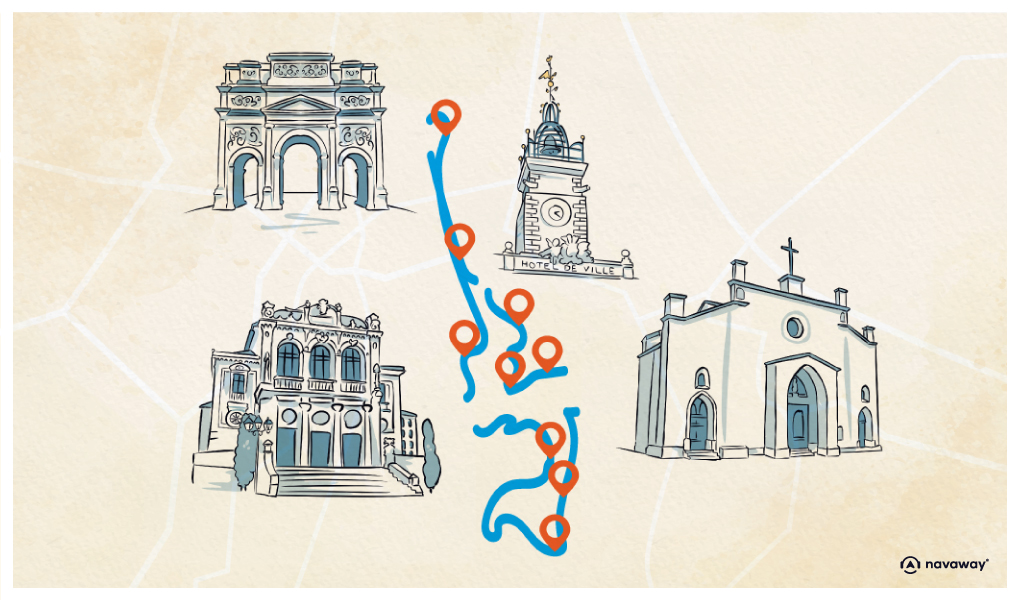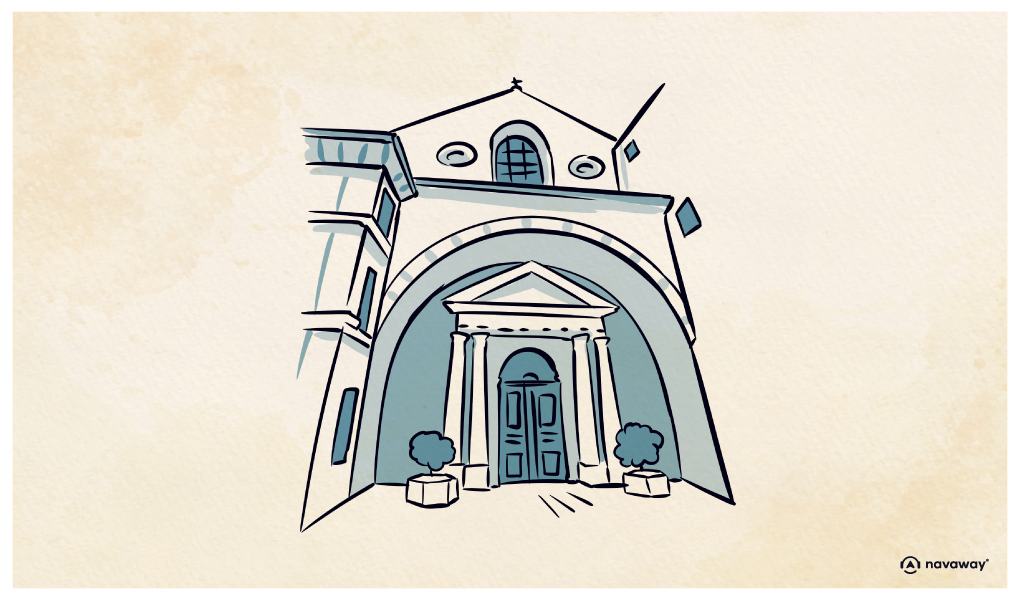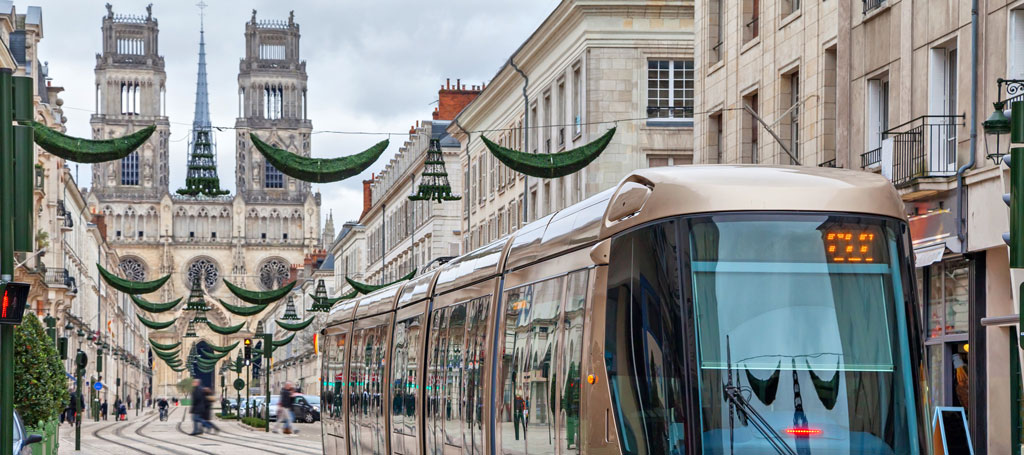
Notre-Dame Cathedral

This point of interest is available as audio on the tour: Visit Orange, The City of Princes
You’re now standing in front of the entrance of the former cathedral of Notre-Dame of Nazareth, listed as a historical monument. It was the episcopal seat of Orange until 1801, before being downgraded when the bishopric was transferred to Avignon. Its Provençal Romanesque style speaks for itself – the church must date from the 12th century. It was built, however, on the remains of an even older church that stood at the center of the town since the 6th century. In the 1560s, during the Wars of Religion, the cathedral was taken over by Protestants, who burned the altarpieces, destroyed the statues, altars and paintings, threw a bell on the choir vaults, plundered the treasury and stole the Gallo-Roman marble baptismal font. After this looting, the cathedral was remodeled for Reformed worship. The clergy then retreated to Caderousse, only to return some twenty years later. A local prince, Philippe Guillaume of Orange, saw to the restoration of the cathedral at his own expense! And in 1599, it was consecrated once again. 40 years later, it got a new organ, and in 1775, its choir was finally restored. But the respite was short-lived; the French Revolution was just around the corner. In 1792, the brand-new choir was used as a hayloft, and the cathedral was transformed into a temple of Reason and of the Supreme Being. Chances are you’re not familiar with this French Revolution cult, so let’s make a quick historical detour. At the time, there was a group called the Hebertists who sought to de-Christianize France. Christian buildings were transformed into atheist temples, where they celebrated civic holidays. The idea was to unite all people under the motto of liberty and equality, and return to the fundamentals of the Roman Republic. But then, deputy Robespierre came along; he was a deist, just like Voltaire, Rousseau and most of the philosophers of the Enlightenment. Being a deist means believing in God, but in a God of reason rather than a God of worship. Robespierre did by no means envision a France full of revolutionary atheists, but rather wanted to unite his compatriots around a civil religion. The idea was to live out a peaceful faith between the different religious currents and, above all, to put religions at the service of the State. In this conception, God is universal and superior to men, and is therefore not concerned with their affairs, cults or beliefs. Okay, theology break’s over. Back to our tour! As you may have guessed, since today it’s a parish church, the building was eventually given back to the Catholics. You can go ahead and enter to take a look around. You can admire the paving of the nave and choir, which was entirely redone in Orange mosaic in the 20th century. But before you go any further, you should know that, according to a local legend, there’s an old and mysterious tunnel right under the cathedral, connecting the Triumphal Arch to the ancient Theatre. Inside this secret tunnel are the relics of Orange. These include several priceless artifacts linked to the crucifixion of Jesus, including fragments of his Cross and a thorn from his Crown. It is said that these relics were brought to Orange in the 9th century and placed under the protection of a number of nuns who were executed for refusing to reveal their hiding place. If you’d like to find out more about this age-old mystery, you can read Bernard Daspet’s book “Les reliques d’Orange”, where history meets fiction. Let’s continue.


Discover Orange with app
An interactive guide through the most beautiful streets, squares, and districts
19 fun audioguides full of historical facts, anecdotes, and legends





Comments